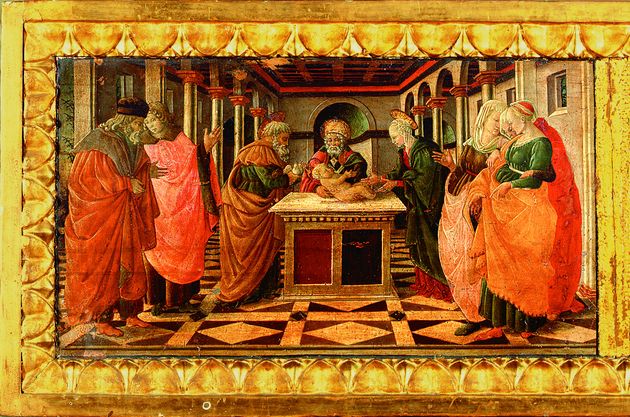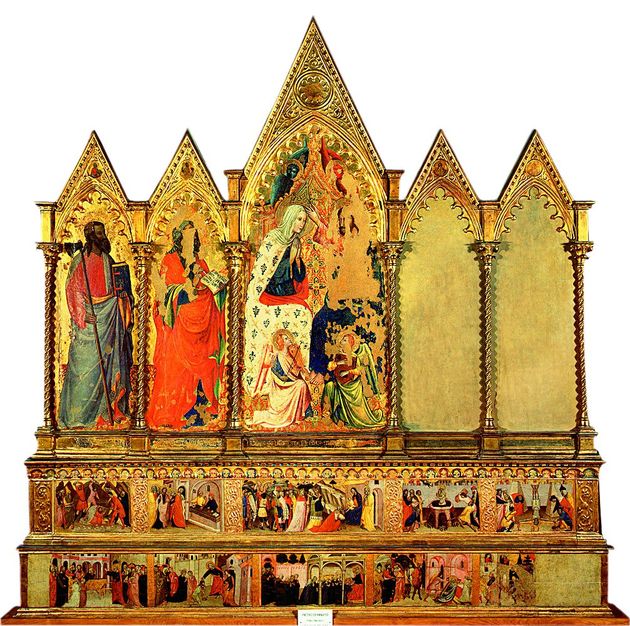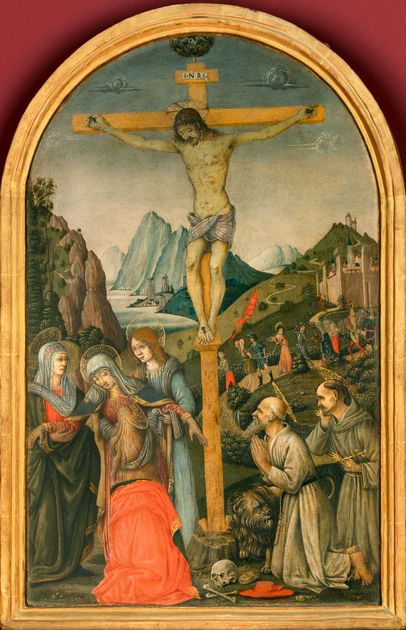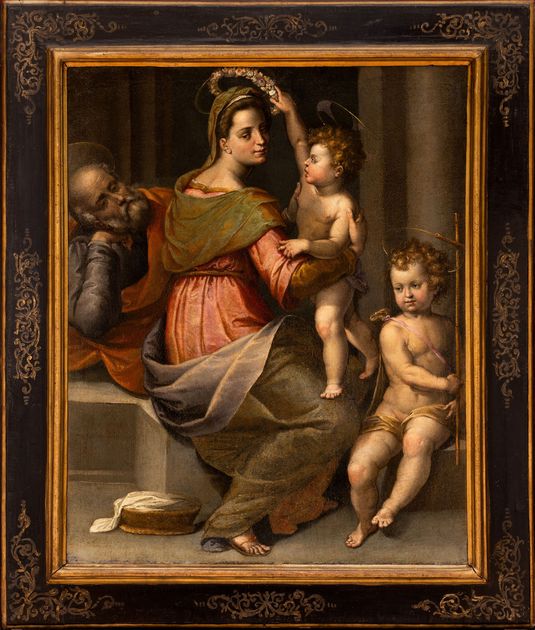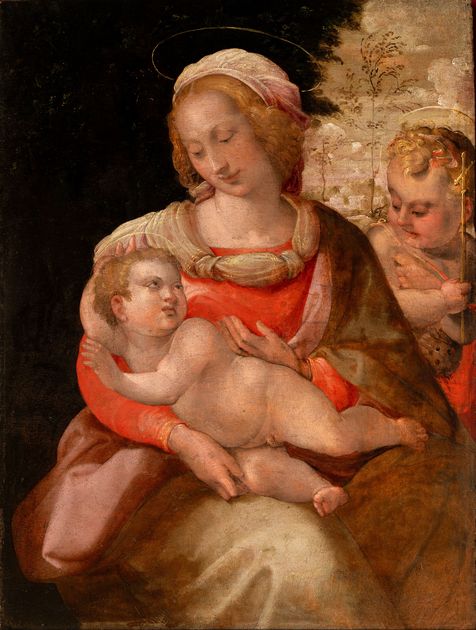Lorenzo di Giovanni was called Lorenzo Monaco because had become a Camaldolese monk at Santa Maria degli Angeli in Florence, and he pursued his work as illuminator and painter outside the monastery. In contrast to the calligraphic, nervy linearism which characterises many of his works, with their evanescent figures and unrealistic drapery, the Prato polyptych has softer lines in the figures, a more delicate chiaroscuro, and a more peaceful contemplative vision, which have caused critics to suggest the intervention of an able collaborator in its making. The extremely refined representation, with its precious colours, forgoes too detailed a description of the decorative elements, so as not to distract the worshipper from the message to be transmitted.
The sweet Madonna, in frontal but not static pose, presents the Child to the faithful; He is standing up in the act of blessing. On the scroll He holds in His left hand He declares Himself to be the Way, the Truth and the Life (John 14:6), the only road to salvation. The apple which the Virgin Mary has on her lap like a new Eve, is a reminder of original sin (from which however she is preserved), but it is even more a symbol of redemption through Christ, who has taken on Himself the sins of the world. A way of glory, but also of suffering and martyrdom, as is suggested by the two young martyr saints, Catherine of Alexandria and Agatha, as well as by the crucifix held by John Gualbert. Meanwhile, the prologue of the Benedictine rule, written on the book which the founder of the order is holding up in clear view, incites the faithful to participate with patience in the sufferings of Christ.
The altarpiece was acquired by the Municipality of Prato in 1870 from the Cicognini College, with a traditional provenance from the Olivetan monastery of San Bartolomeo alle Sacca. In the last years some art historians have suggested that the polyptych had perhaps been painted for a monastery in Vallombrosa, as the presence of St. John Gualbert would seem to indicate.










